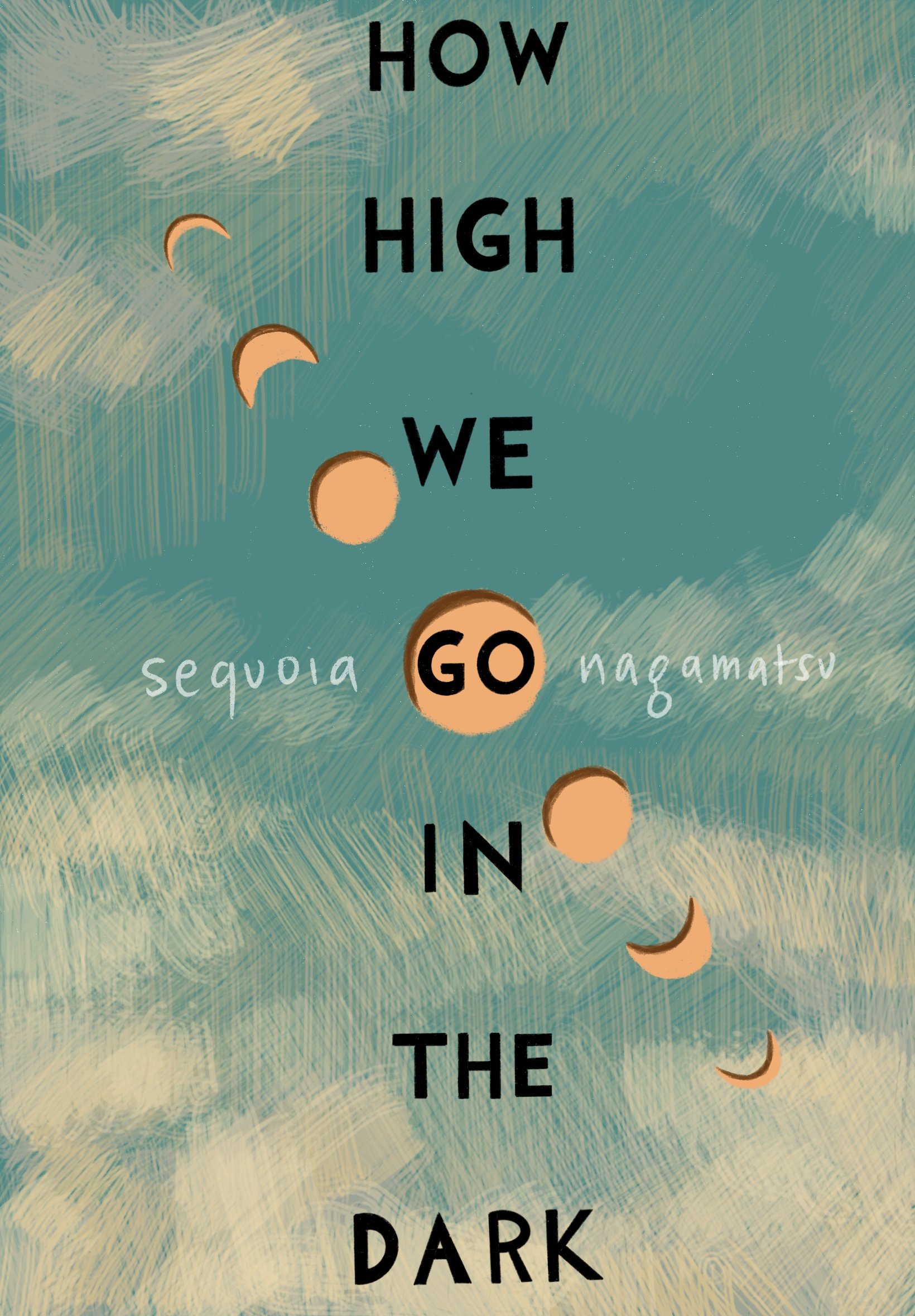Sequoia Nagamatsu explores life and death in a plague-stricken future in debut novel
Graphic by Sofía Savid ’24.
By Maggie Wills ’25
Staff Writer
“It seemed like everyone was walking either to or from a funeral. Death had become a way of life,” author Sequoia Nagamatsu writes in his new novel, “How High We Go in the Dark.” The book, published Jan. 18, 2022, drops readers into a futuristic reality eerily similar to our own.
In Nagamatsu’s world, it is 2030, and researchers in Antarctica are working tirelessly to find solutions to salvage the rapidly-warming planet. Despite their efforts, the melting permafrost has released a 30,000-year-old virus that begins infecting the research team and later spreads to the rest of the world. The deadly virus, known as the “Arctic Plague,” overwhelmingly infects children, causing their specialized tissue cells to assume the identity of other tissues. Patients’ hearts develop tiny brains and their lungs slowly develop into livers. Death rates increase, as does the demand for funeral services — lists of patients needing organ transplants are endless.
The world adapts to these changes by developing new technologies, such as human organs grown in pigs. The individuals inhabiting this world are forced to adapt. Their morals and values change as they become desensitized to death. What does not change, however, is humanity’s desire for hope and relationships.
In each chapter, Nagamatsu introduces readers to a new individual who yearns for human connection while simultaneously navigating a life affected by the plague. Many chapters take place in the California Bay Area and Japan, but others transcend Earth and even the physical world. The scope of the book is wide, with some chapters spanning centuries.
Each individual’s story is intricately linked to others in a way that unifies the novel. These characters grapple with their new reality and attempt to find hope and community in the darkest of times. A medical researcher mourns the loss of his son by becoming the acting father to his test-subject pig that has learned to speak; an adolescent boy connects with his mother through her prized robot dog after she dies from the virus; a close-knit cul-de-sac hosts funerals together, vowing to combine their ashes in a community urn.
“In each chapter, Nagamatsu introduces readers to a new individual who yearns for human connection while simultaneously navigating a life affected by the plague.”
At points, the world Nagamatsu creates feels like the direction our humanity is currently heading in, which can make for a particularly unsettling reading experience. In Nagamatsu’s world, death is slowly being commodified — countless companies advertise their funeral packages and death-centered social media platforms. Constant natural disasters lead scientists to search for a new home planet with zero plans to fix the one they’ve got.
Other stories are absolutely heartbreaking, but impossible to put down. The chapter “The Used-To-Be Party” is incredibly striking. It is told from the perspective of a newly-widowed man, Dan, who attempts to connect with his neighbors who have also lost loved ones. He laments on his failure to be a bigger part of his daughter’s and wife’s lives, seeking to change that by hosting a cookout for his neighbors. Dan reasons that “[they] need a party to break the silence, to begin to heal.”
According to Nagamatsu’s website, “How High We Go In The Dark” is his debut novel. He has published many works in literary magazines and penned a 2016 collection of short stories called “Where We Go When All We Were Is Gone.” He is soon publishing another novel shortly entitled “Girl Zero.” Nagamatsu lives in Minneapolis with his wife and teaches creative writing at St. Olaf College.
In an interview with LitHub, Nagamatsu said he began writing “How High We Go In The Dark” before the start of the COVID-19 pandemic. He mentioned feeling apprehensive about publishing due to the subject matter, but ultimately decided that publishing the book served as a way to understand the lockdown and cope with his father’s death.
According to Nagamatsu, the book has received mixed reviews. Some readers have found his world comforting, while others have felt it hit too close to home.
To echo Gabino Iglesias of Locus Magazine’s thoughts on the novel, “reading [Nagamatsu’s] ‘How High We Go in the Dark’ is not always a pleasurable experience.” Nevertheless, it is an introspective and rewarding read. It invites readers to reflect on grief, sadness and hope. Despite the world seeming to grow more and more despondent, Nagamatsu reminds readers to find comfort in connection, even in the darkest of times.


